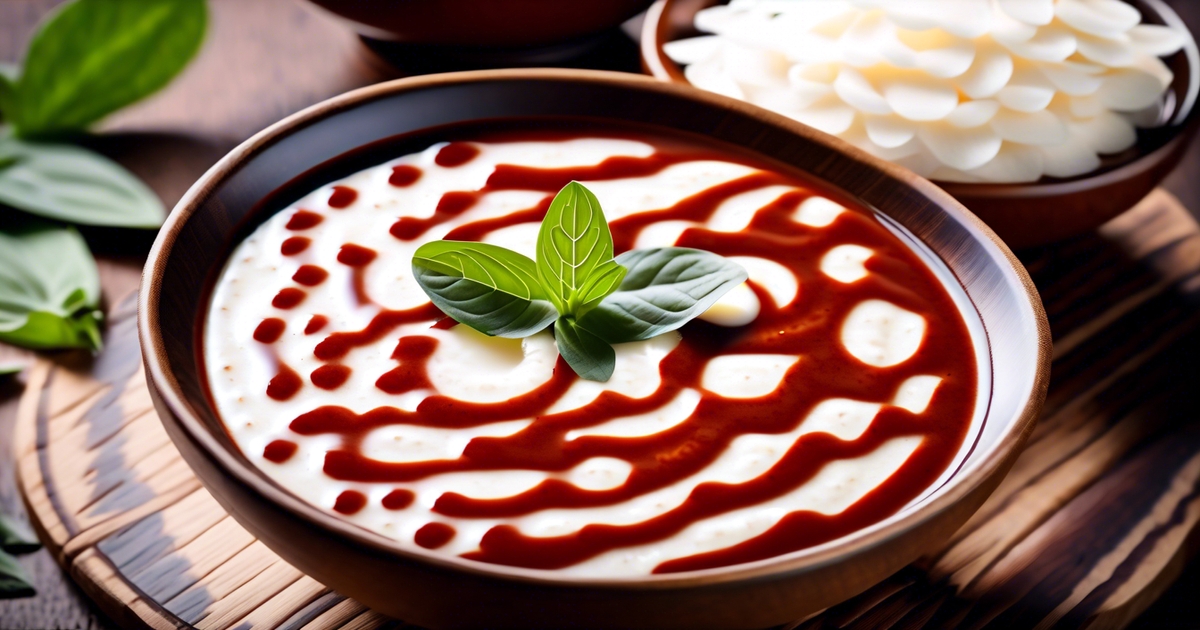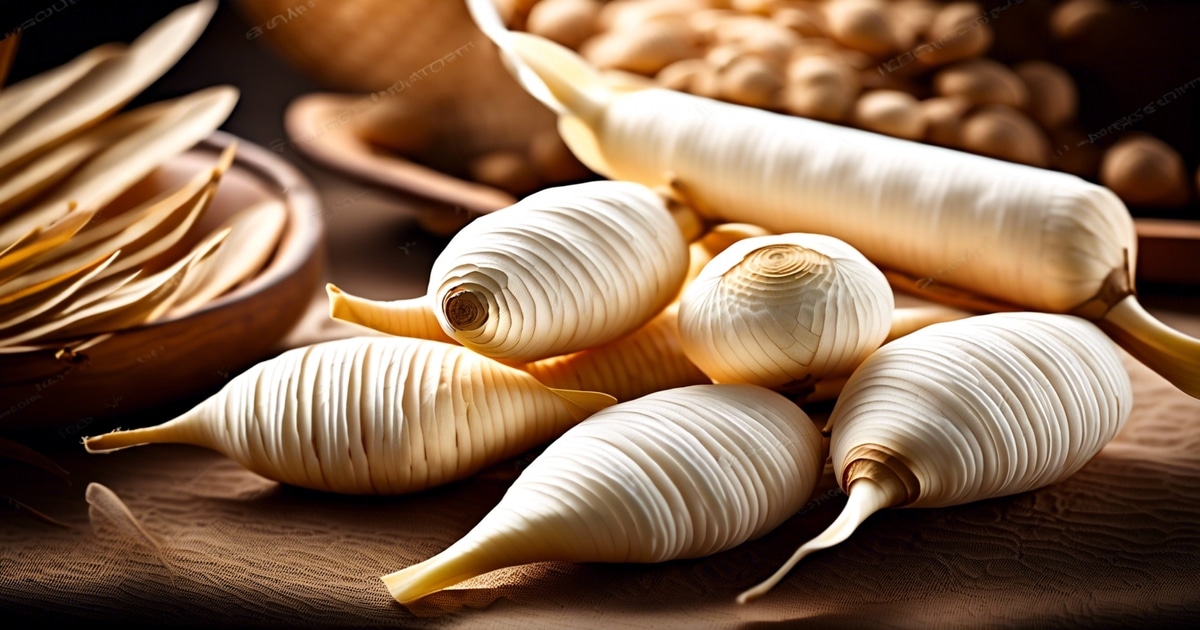Key Takeaways
- What is Arrowroot? Arrowroot is a versatile and nutritious ingredient with various health benefits, making it a valuable addition to your diet.
- To incorporate arrowroot into your meals, consider using it as a thickening agent in soups, sauces, and baked goods for a gluten-free alternative.
- For digestive health, arrowroot can help soothe the stomach and alleviate issues like diarrhea due to its gentle and easily digestible properties.
- When aiming for weight loss, arrowroot’s low-calorie content and high fiber levels can help promote a feeling of fullness and support healthy digestion.
- Incorporating arrowroot into your cooking adds nutritional value and, with its rich source of vitamins and minerals, contributes to boosting your immune system.
- If you follow a gluten-free diet, arrowroot can be an excellent substitute for wheat flour in recipes. It has a light and airy texture while being easy on the stomach.
Curious about arrowroot? Wondering how it’s different from cornstarch? Arrowroot is a versatile ingredient used in cooking and baking, offering potential health benefits. It can be a gluten-free thickener and a natural alternative to other starches. Let’s explore the secrets of this powerful root powder.
Arrowroot Overview
Origin
Arrowroot, derived from the root of the Maranta arundinacea plant, has been utilized for centuries by indigenous tribes in South America. Historically, it was used to treat wounds and stomach ailments due to its medicinal properties.
Nutritional Composition and Benefits
Arrowroot is a gluten-free starch with high potassium, B vitamins, and iron levels. It is easily digestible and can be a suitable alternative for individuals with dietary restrictions. Moreover, it is a thickening agent in cooking, making it a versatile ingredient in various recipes.
Culinary and Medicinal Uses
Arrowroot is often used to thicken sauces, soups, and desserts because it doesn’t change the taste and looks clear when cooked. It’s better than cornstarch for long cooking times.
- Arrowroot powder can be mixed with water to create a paste that soothes skin irritations, such as sunburns or insect bites.
- Due to its gentle nature on the digestive system, arrowroot is often recommended for individuals recovering from illnesses or experiencing digestive issues.
Health Benefits Explained
Antioxidant Properties
Arrowroot, known for its antioxidant properties, can help combat oxidative stress in the body. By neutralizing free radicals, it contributes to overall health and well-being. Incorporating arrowroot into your diet can boost your immune system and protect against various diseases.
Anti-Inflammatory Effects
Arrowroot can help reduce inflammation and manage pain, making it good for arthritis and other inflammatory disorders. Eating arrowroot regularly can improve joint health.
Impact on Blood Sugar Levels
For individuals concerned about blood sugar levels, arrowroot offers a natural solution. This starchy root vegetable has a low glycemic index, making it an ideal choice for those seeking to effectively regulate blood sugar levels. Arrowroot can be particularly beneficial for individuals with diabetes or those aiming to maintain stable energy throughout the day.
Weight Loss and Arrowroot

Low-Calorie Benefits
Arrowroot is a low-calorie alternative to other starches like cornstarch, making it ideal for those looking to shed pounds. With fewer calories than sweet potato or cornstarch, arrowroot can aid in weight loss efforts.
Satiety-Inducing Properties
Due to its resistant starch content, arrowroot helps induce a feeling of fullness, preventing overeating. This can benefit individuals aiming to control their calorie intake and manage their weight effectively.
Digestive Health Promotion
The starch content in arrowroot plays a crucial role in promoting healthy digestion. By supporting the growth of beneficial bacteria in the gut, arrowroot aids in maintaining a balanced digestive system, which is essential for effective weight management.
Arrowroot in Digestive Health
Soothing Effects
Arrowroot, derived from a root vegetable, offers remarkable benefits for digestive health. Its soothing effects on the digestive system make it an excellent choice for individuals with gastrointestinal issues. Arrowroot acts as a gentle substance that aids in calming the stomach and reducing discomfort.
Alleviating Diarrhea
Arrowroot can help with diarrhea by creating a protective layer in the intestines. This makes digesting food and absorbing nutrients easier, reducing inflammation and improving bowel movements.
Gut Health Support
Arrowroot plays a crucial role in maintaining gut health by acting as a prebiotic that nourishes beneficial bacteria in the intestines. Adding arrowroot to your diet can improve digestion, help you absorb nutrients, and keep your gut healthy. This can lower the chance of stomach problems.
Immune System Support
Nutrient-Rich Benefits
Arrowroot provides essential nutrients that boost immune function, aiding in overall wellness. Rich in vitamins and minerals, it supports the body’s defense mechanisms.
Anti-Inflammatory Properties
Arrowroot’s potential role in reducing inflammation is crucial for maintaining a healthy immune system. By combating inflammation, it helps the body function optimally.
Overall Wellness Enhancement
Incorporating arrowroot into your diet can enhance overall wellness. Its benefits extend beyond digestion, positively impacting the immune system.
Arrowroot in Gluten-Free Diets
Naturally Gluten-Free
Arrowroot is a gluten-free starch derived from the cassava plant, making it an excellent choice for individuals with gluten sensitivities. It is a natural alternative to traditional wheat flour, suitable for those following a gluten-free diet.
Versatile Cooking Ingredient
Arrowroot is a versatile ingredient in gluten-free cooking. It adds texture and thickness to various dishes. Its neutral flavor makes it ideal for sweet and savory recipes like sauces, gravies, and baked goods.
Wheat Flour Substitute
Consider using arrowroot as a gluten-free substitute when replacing wheat flour in recipes. It works well in recipes that require thickening or binding agents, offering a similar consistency without gluten.
Cooking and Baking Uses

Thickening Agent
Arrowroot is a thickening agent in various dishes, especially sauces and gravies. Its fine texture allows for smooth consistency without altering the dish’s flavor. The starch from arrowroot is extracted to provide a neutral taste, making it ideal for thickening without overpowering other ingredients.
Binding Agent
Arrowroot helps hold ingredients together in baking by replacing wheat flour with gluten-free options. When mixed with other gluten-free flour, it gives baked goods the right structure and texture.
Texture Enhancer
Arrowroot is great for making desserts smooth. It stops ice crystals in ice cream and sorbets, making them creamy. It also makes custards and puddings velvety and tasty.
Substitutes and Comparisons
Cornstarch vs. Arrowroot
Cornstarch, a common thickening agent, is derived from corn, whereas arrowroot comes from the arrowroot plant. Arrowroot tends to create a glossier texture compared to cornstarch’s more matte finish.
Tapioca Flour Comparison
Tapioca flour, like arrowroot, is gluten-free and works well as a thickening agent. However, when used in recipes, arrowroot typically produces a clearer texture than tapioca flour.
Substitution Ratios
When substituting cornstarch with arrowroot, use a 1:1 ratio. The substitution ratio for tapioca flour varies; typically, you would use 2 teaspoons of arrowroot for every 1 tablespoon of tapioca flour.
Texture and Flavor Variances
In recipes, arrowroot creates a smoother texture than cornstarch’s slightly grainy feel. Arrowroot imparts a neutral flavor profile, ideal for delicate dishes like custards or sauces.
Applications in Cosmetics
Beyond culinary uses, arrowroot is gaining popularity in cosmetics due to its natural properties. Its soft texture and oil-absorbing qualities make it an excellent alternative to talc in face powders and masks.
Closing Thoughts
Incorporating arrowroot into your diet can offer myriad health benefits, from aiding digestion to supporting your immune system. Whether you want to lose weight or follow a gluten-free lifestyle, arrowroot can be a versatile addition to your kitchen arsenal. Experiment with using it in various recipes and enjoy its nutritional advantages.
Take the opportunity to explore the world of arrowroot further. Try different cooking and baking methods, discover new substitutes, and reap the rewards of this natural ingredient. Embrace arrowroot’s versatility and health perks, making it a valuable asset in your culinary journey.
Frequently Asked Questions
What are the health benefits of arrowroot?
Arrowroot offers various health benefits, including aiding digestion, boosting the immune system, and supporting weight loss due to its high fiber content and essential nutrients.
How can arrowroot be used in gluten-free diets?
Arrowroot is a popular ingredient in gluten-free diets as it is naturally gluten-free, making it a versatile alternative for thickening agents or baking recipes that require wheat flour.
Can arrowroot help with weight loss?
Arrowroot’s low-calorie content and high fiber levels can support weight loss. It promotes a feeling of fullness and aids in digestion, which can contribute to maintaining a healthy weight.
What are some common cooking and baking uses of arrowroot?
Arrowroot is a thickening agent in sauces, soups, and gravies. It is also a popular ingredient in gluten-free baking recipes for cookies, cakes, and bread due to its light texture.
Are there any suitable substitutes for arrowroot?
Cornstarch or tapioca starch can be used as substitutes for arrowroot in recipes that require thickening agents. However, remember that these substitutes may alter the texture slightly compared to arrowroot.

